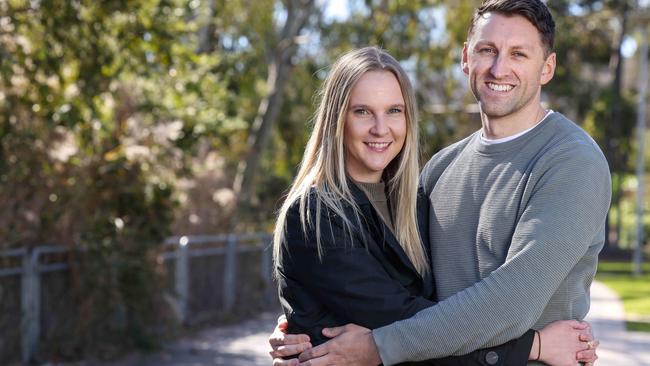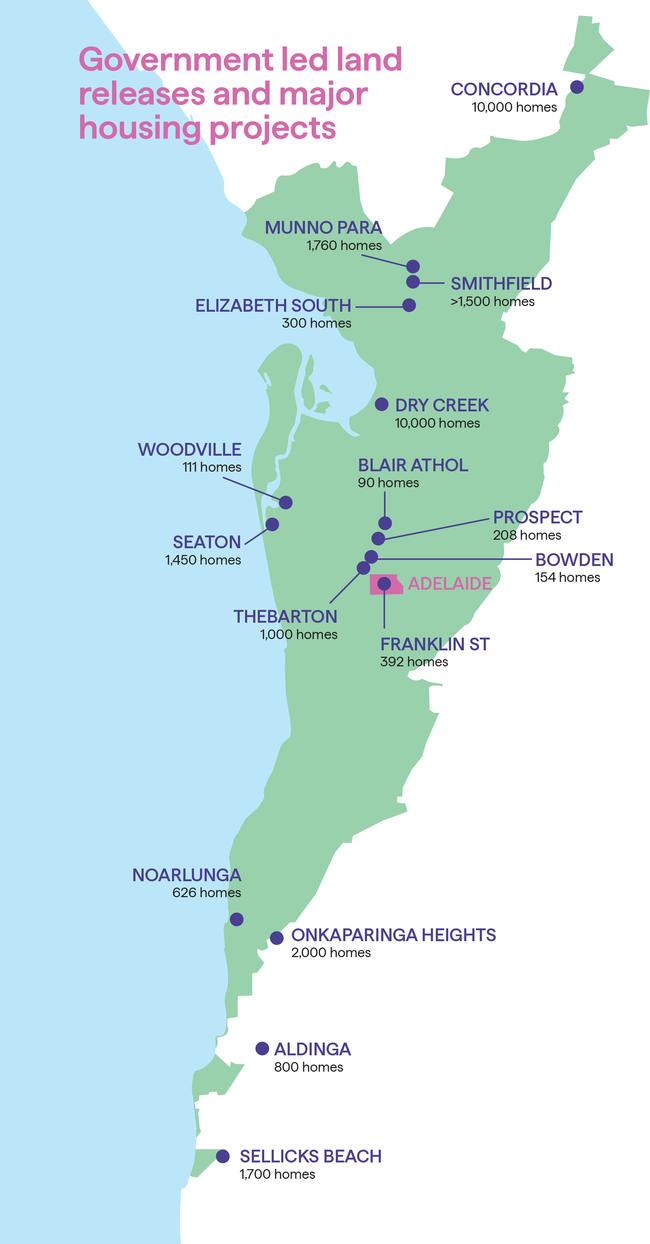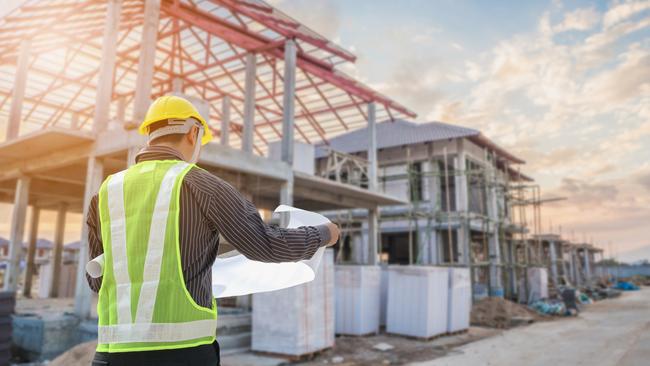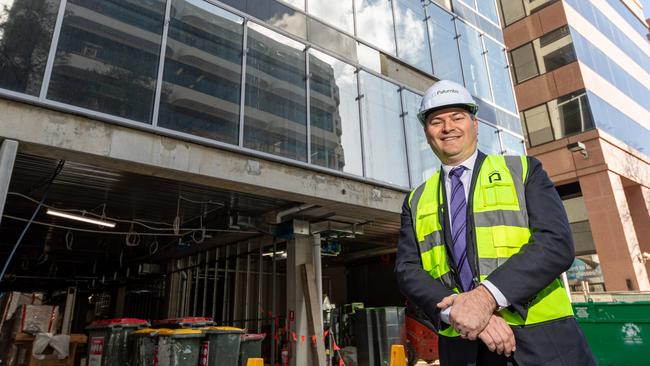Room to grow: Housing Roadmap a blueprint for greater home security for South Australians
By increasing land availability, abolishing stamp duty and investing in infrastructure, the State Government is working to help more people into their own homes

SA News
Don't miss out on the headlines from SA News. Followed categories will be added to My News.
The South Australian Government is fast tracking what will be the single largest release of residential land in the state’s history, set to deliver more than 25,000 homes for South Australians.
Rezoning of land at Onkaparinga Heights is already under way, creating the capacity for at least 2000 new homes. Sites at Concordia, Dry Creek and Sellicks Beach have also been identified for rezoning, delivering another 21,700 new homes.
Liam Golding, chief executive, Urban Development Institute in South Australia, says the land release has been welcomed by industry. “There was a desperate need for additional serviced land we can build houses on,” he says. “We know we’re in a housing crisis and the only way out of the crisis is to increase housing supply. We were very supportive of the State Government recognising the need to identify parcels of land that can be rezoned and turned into housing in the future.”

The land release is more than double the number of allotments released in Mount Barker in 2011 and four times the number of allotments released at Mawson Lakes in the early 2000s. The additional supply is expected to open the doors to homes for more than 90,000 South Australians. Infrastructure planning for the first site will begin this year and at least 15 per cent of the new homes are earmarked for affordable housing.
“With what we’re seeing with the median house price in the state at the moment, it is clear that there is tremendous demand for housing,” Golding says.
“We need to be meeting that demand as quickly and as smoothly as possible so we can build the housing supply that will improve affordability and get more families into homes.”
Concordia, Dry Creek and Sellicks Beach were first identified as housing growth fronts in the 30-Year Plan for Greater Adelaide, published in 2010. The new land release will build on the existing supply of 139,000 zoned allotments across Greater Adelaide.
The State Government’s plans for multiple economic expansions within defence shipbuilding, the new Women’s and Children’s Hospital, North-South Corridor, Northern Water Project and renewable hydrogen will also increase demand for more housing, Golding says. “Credit to the State Government for grasping the nettle because we know it is challenging to roll something of this scale out with the speed that’s required,” he says.
“It’s important for the Greater Adelaide Regional Plan to be taking the high-growth forecast because it’s a lot easier to taper off a growth forecast that isn’t quite met as opposed to ramping something up at the last minute. With the opportunities we have, I would strongly encourage the government to identify more pockets of land and more areas for growth.”
Keeping the home ownership dream alive
The State Government’s move to abolish stamp duty is a crucial step towards keeping the “great Australian dream” of home ownership alive, according to Master Builders SA chief executive Will Frogley.
Frogley says he is “ecstatic” with the state budget announcement that South Australian home buyers will no longer have to pay stamp duty on new builds, and that the threshold on the $15,000 first home owner grant has also been axed.
The move applies to all first home buyers who purchase a new home – including a house, flat, unit, townhouse or apartment – or an off-the-plan apartment, a house and land package or vacant land to build a new home.
As a result of these measures, a first home buyer who enters into a contract to purchase a new home valued at $750,000 on or after June 6 this year could receive relief of up to $50,000.

Frogley says the spin-off effects will be far reaching across South Australia’s economic landscape.
“Reducing upfront costs will save first home buyers tens of thousands more dollars over the life of their loan,” he says. “So it’s not just that initial upfront saving, it’s the not paying interest on a larger principal over the life of the loan (that is important).”
Frogley says the stamp duty axing is a “winner on so many different fronts”. “It is awesome news for any South Australian who dreams of buying their own home (as well as) builders, tradies, suppliers, apprentices and all of the more than 80,000 South Australians directly employed in our industry.
“The amount of money you had to pay in stamp duty was a heck of a lot ... if it was $20-$25,000 or so, that was extra money that you needed to pay on your principal as a result.
“You’ve got to keep the great Australian dream of home ownership alive. It’s so important socially and economically.
“Building more homes is badly needed for social reasons. And in terms of bang for your buck, according to the ABS, housing delivers the second-highest economic multiplier out of all industries.”
“The key point I think is that, as housing prices have gone up over the years, the amount paid in stamp duty has gone up and up with it – so it’s become more of a burden on everybody.”
Frogley says the benefits are being felt now. “There have been enquiries straight away. Our building approvals in SA are holding up better than other places around the country, which is really positive.”
It is pleasing to see the government “back in” an MBASA-commissioned report into stamp duty – carried out ahead of the 2022 state election – making the end decision appear relatively simple, he says.
“What do we really want?” Frogley asks. “We want more people employed and more homes built, so why have taxes that make these things difficult to achieve? If you want more people employed and more homes built, you don’t have taxes that make it more difficult to do.
“With a lot of decisions made that impact housing, it’s really crucial that someone’s looking at it from the perspective of the first home buyer (and) putting themselves in their shoes and thinking ‘is this a good idea?’
“We need to keep housing affordable.”

Pair’s stamp of approval
After 13 years on the rental treadmill, Kelly Spanos and partner Dylan Hicks have decided it’s time to jump off – and into a home of their own. And the Camden Park couple say the recent move by the state government to scrap stamp duty completely for first home buyers purchasing or building a new home might help them do just that.
Kelly and Dylan, who work in media planning and sports administration respectively, say their housing options have been greatly enhanced thanks to the combination of the stamp duty abolition and the first home owner grant.
“The abolishment of stamp duty will allow us to increase our borrowing capacity, which hopefully means we will be able to find a family home,” 31-year-old Kelly says. When added to the first home buyer grant, the couple expect to save about $47,000. The pair have been seriously exploring the housing market for the last year and say they are open to either building or buying an existing property.
“We are just waiting to find the right opportunity for us,” she says.
“We spend the majority of our time scrolling through realestate.com.au, looking for the right location and style of house we would like to live in. We haven’t been to as many inspections as we would have liked due to limited time and not finding the right house within our price range.”
Kelly says she is aware of other would-be home owners facing the same issue. “We have had a few friends go as far as bidding and losing out in an auction because they got outbid and the house went over market price,” she says.
Keen to stay in the western suburbs, the couple are also prepared to compromise on their original family-home dreams.
“We have been looking at living anywhere from the west to the south along the beach side,” Kelly says. “We would love to buy a three-plus bedroom family home – but in the current market, to stay in the location we would like to live in, we are now looking for a smaller place.”
Owning their own home is a crucial step in establishing their future security, she says.
“It is important to be in our own home as we would be investing in our future and building equity owning property that would benefit us financially in the long run. It will allow us to feel secure and a sense of pride owning a house we can host people in and be able to make improvements or additions to.”

Billion-dollar key to easing house pain
Greater investment in infrastructure is a crucial plank in tackling South Australia’s housing crisis – and it can’t happen quickly enough.
That’s the opinion of Palumbo Group managing director Daniel Palumbo, who says the State Government’s commitment to directing an extra $1.2 billion into water and wastewater delivery is a welcome component of its Housing Roadmap.
“The end game needs to be that we get out of the housing crisis,” Palumbo says. “We’ve got to deliver houses and we’ve got an industry waiting to build – and allotments that aren’t ready to build on. So it’s about unlocking that bottleneck so the land is ready to be titled and construction can occur.”
The billion-dollar injection – together with other investments included in SA Water’s existing 2024-28 program – will enable the delivery of services to an estimated 40,000 new homes across South Australia, including an extra 17,000 homes in the state’s growth areas, north and south of the city.
The move will help unlock housing growth in suburbs including Angle Vale – where the Palumbo Group is developing its 400-home Hillsview Green estate – Virginia, Two Wells, Riverlea, Gawler East, Roseworthy, Hackham, Eyre and Blakeview.
Palumbo says developments in recent years have stalled through delays in “getting pipes into the ground” and other infrastructure issues.
“Projects are being held up,” he says. “I know of developers who are selling their projects because the holding costs have been so great while they’ve been waiting for the infrastructure they don’t have any other choice.”

With key industry groups such as the Urban Development Institute highlighting the issue, Palumbo says it’s “good news” that infrastructure delivery is being acknowledged and acted on.
“That recognition has led to a better focus on how to fix the problem. It’s also brought out that it’s not just a new-land release problem – it’s really everybody’s problem.”
Standardised infrastructure requirements will help streamline the process, while Palumbo says the Roadmap’s focus on the need to tackle a likely resultant skills shortage once the infrastructure bottleneck has been unblocked is also pleasing.
The moves will help pave the way for growth in the construction sector – and greater employment opportunities.
“We recognise we are going to have a trade shortage but right now there are trades we can’t
put to work because the land hasn’t been unlocked,” he says.
“I think a lot of people are seeing the industry as a place where they can be successful, have a decent income and a decent lifestyle.”
Palumbo says the Housing Roadmap is a valuable blueprint for the state’s housing sector.
“We’re grateful for the Roadmap. I think it’s great that a set of rules has been laid down that are clear, concise and everyone knows which direction we’re heading in.
“The only way it can be improved is to put some time frames in play.
“It’s about making sure we can deliver as quickly as the public require it, which at the moment we’ve fallen well short of. If we kept going the way we had been in the past decade, we’d end up in a bottleneck far greater than the one that currently presents itself.”
READ MORE:
New public housing and more streamlined planning process for South Australian homes
SA Government investing in jobs for the future to ease state housing crisis


